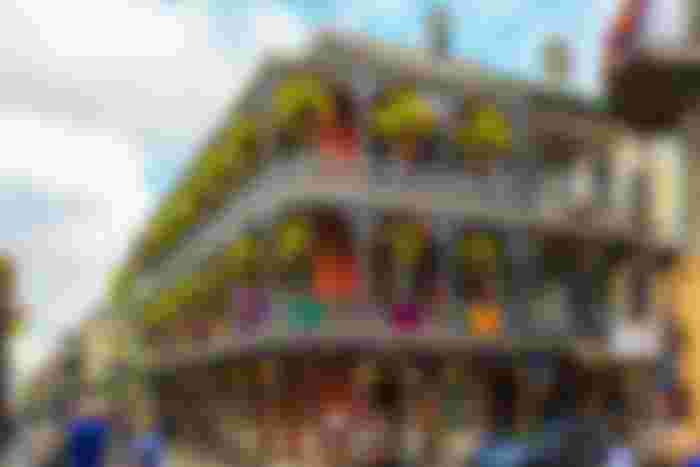New Orleans is the jewel of the North American state of Louisiana. It shines just above the mouth of the mighty Mississippi River into the Gulf of Mexico. The heart of the city lies between the river and Lake Ponchartrain.
On this day in 1718, French emigrants to America, in Louisiana, founded the city of New Orleans, after the French Duke of Orleans.
Precisely because of the shape of the river, which winds around the center, it was nicknamed the Sickle City, although the name "relaxation" is more appropriate for New Orleans - in favor of the relaxed atmosphere of the city, but also the climate.
The subtropical climate is generally hot and humid from mid-March to October, although winters can be cool and humid. So in New Orleans, a lot of rain falls, and on hot summer afternoons, even a real storm happens. Hurricane "Katrina" hit the city on August 29, 2005. As if that wasn't enough, a tornado hit him in February 2006.

Origin: New Orleans was founded in 1718 on the wetlands of the vast French territory of Louisiana. It was named after the Duke of Orleans. Regardless of hurricanes, mosquitoes, diseases and floods, settlers came and the city prospered. In 1762, the territory was secretly handed over to Spain.
France regained it in 1800, only to sell it to America three years later. Attracted by rich plantations and harbors, Americans settled in search of wealth. During the 19th century, New Orleans exploded economically due to cotton and sugar plantations and by 1860 had become the richest city in the country.
Welfare for the Economy: Today, the Port of New Orleans is the second largest port in the country and brings prosperity to the city’s economy, along with the petrochemical and aerospace industries and, of course, tourism. Due to its unique atmosphere, New Orleans is one of the most popular destinations in America, especially during the "Mardi Gras" carnival in February.
The mixture of French, Spanish, African and American culture over the centuries has created a mixed environment, a mix of elegant colonial Creole elegance, music and cuisine of Cajun farmers, the splendor of the Mardi Gras festival, the breath of voodoo and a large piece of Dixieland jazz.
New Orleans has many tourist attractions, but it is best to see it informally. An easy walk along the French Quarter will reveal you unusual shops, hidden courtyards and beautiful Creole-style houses, with richly decorated balconies.
Garden District: When you reach the green Garden District, an elegant national-historic area of preserved pre-war buildings, you will see one of the most grandiose houses - the 1415 Robinson House, reminiscent of Italian villas and probably one of the first houses to have plumbing.
In the center of the Garden is the Lafayette Cemetery with its ornamented crypts and tombs. The film "Interview with a Vampire" (1994) was shot at that place, and it is one of the most visited destinations. The Garden District was built in 1820 by wealthy American merchants. Although many houses are not open to the public, a walk around the area is a real experience for tourists.
French Quarter: Many visitors to New Orleans, however, rush first to the heart of the city - the French Quarter, also known as the Old Square. It covers about 12 city blocks, with Jackson Square in the middle. If you head down towards Kanalska Street, you descend straight to the most popular view of the city - Voldenberg Park, which with its wooden promenade, known as the Moon Promenade, reveals a beautiful view of the Mississippi.
The lower part of the French Quarter also includes the French Market, one of the most picturesque points of the city. It dates back to colonial times, when the Indians had a trading colony there, and during the Spanish and French eras there was a large open-air market.

Renovated buildings, such as the Kasapska pijaca from 1813, today a cafeteria, then shops and offices, stalls and colorful give the street the atmosphere of a festival. Farmers Market and Bourbon Street: The large covered Farmers Market (built in 1936), which sells fresh produce, and the flea market, where you can find everything - clothing, jewelry, local gastronomic delicacies and souvenirs, are a must-see in the city. Perhaps the most famous place in the French Quarter is Bourbon Street. It is famous for jazz clubs, bars and antique shops. In this neighborhood, it is worth looking for `` Lafit Blacksmith``, a shop tavern and `` Madame Jones``, a house in the unique West Indian style from 1788. In that part there is a central business area, as well as warehouses, a renovated part with galleries, bars and restaurants. Northwest of there is the so-called. The upper town, where the Garden District and Faburz Marinji are located, is a historic part of town with a bohemian atmosphere, packed with places to go out at night. Nightlife: And the nightlife is something this magical city can brag about out loud. The already widely known Bourbon Street is a magnet for tourists. It has everything from strip clubs to bars where jazz, blues and cajun music are played. Clubs and bars are open 24 hours a day, and the city is one of the few places in America where alcohol can be consumed on the street. Jazz is said to have originated in New Orleans, and the city is constantly buzzing with music. In terms of culture, New Orleans is one of the "most European" cities in America. It has cultural roots from early Spanish and French immigrants (Creoles), as well as French asylum seekers from Nova Scotia in the 18th century (Kajuni).



